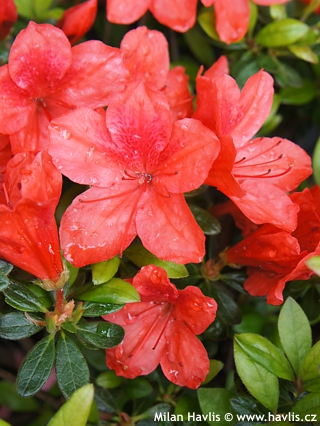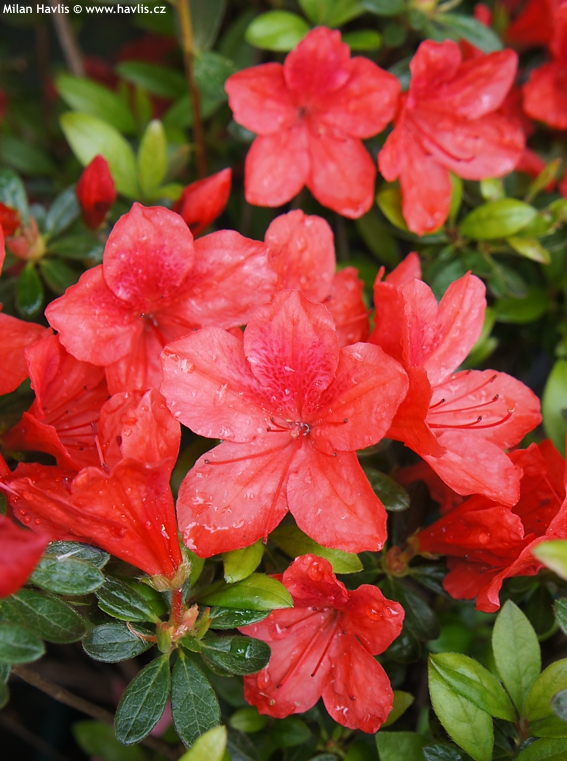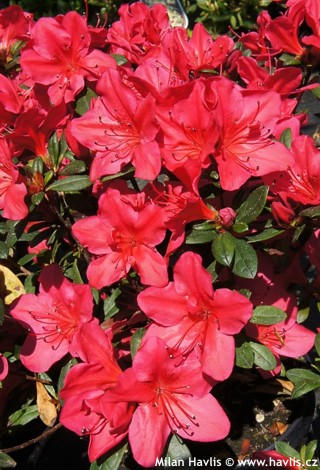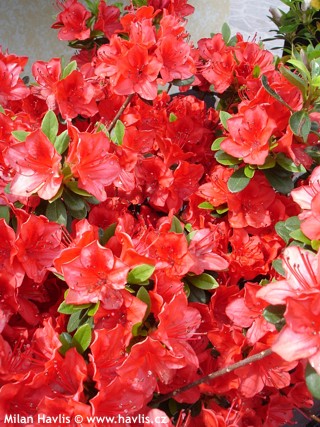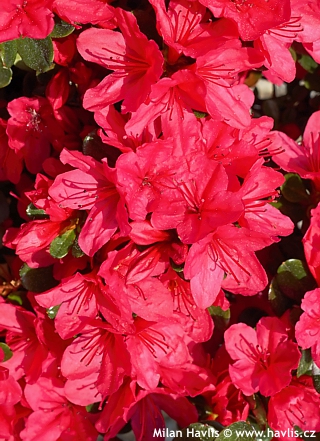Azalea japonica 'RADJA' Japanese azalea
Azalea
Japanese azaleas are very popular features of our gardens. In their home climate they grow to relatively substantial shrubs, as opposed to limited sizes in our continental, dry climate. They are very floriferous, maintenance-free shrubs that usually bloom from end April until June.
Radja is an old and reliable hybrid of hardy evergreen azalea. It produces bright, warm red, open wide, single flowers and they come out in profusion from about mid May for 2-3 weeks on the background of small, dark green, broadly elliptic, highly glossy, evergreen leaves. The plant is very compact, almost dwarf, and exhibits dense, mounding habit.
Japanese azaleas can be clipped to shapes in early June. If so, do not use fertilizers enhancing growth rate. The size of new branches would get out hand and spoil the shape you are going to achieve. They need light, permeable soil that is acid, constantly moist (keep azaleas mulched at all times) and moderately fertile. Use fertilizers for rhododendrons and azaleas, or ericaceous plants. The best soil mix is 1/3 of peat, 1/3 of leaf-mould or lime-free compost, and 1/3 of soil from the hole where you are going to plant it. Azaleas have shallow roots, so do not plant not too deep. They are fully hardy to about -27°C (USDA zone 5b-6).
Last update 24-11-2020.

































